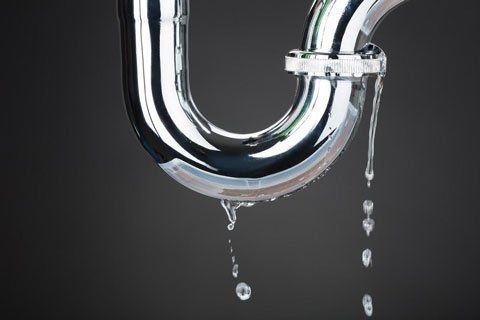We've come across this article relating to Finding hidden leaks directly below on the web and believe it made perfect sense to write about it with you on this page.
.jpg)
Early detection of leaking water lines can reduce a potential disaster. Some tiny water leakages might not be noticeable.
1. Analyze the Water Meter
Checking it is a proven way that assists you discover leakages. If it relocates, that suggests a fast-moving leakage. This means you may have a slow-moving leak that can even be below ground.
2. Inspect Water Consumption
If you spot abrupt adjustments, despite your intake being the very same, it means that you have leakages in your plumbing system. An abrupt spike in your costs suggests a fast-moving leakage.
At the same time, a stable rise monthly, despite the exact same habits, shows you have a slow leak that's also gradually escalating. Call a plumber to thoroughly inspect your building, specifically if you really feel a cozy location on your flooring with piping underneath.
3. Do a Food Coloring Examination
When it pertains to water intake, 30% originates from commodes. Test to see if they are running correctly. Decline specks of food color in the storage tank as well as wait 10 minutes. There's a leakage between the storage tank as well as bowl if the color somehow infiltrates your bowl throughout that time without flushing.
4. Asses Outside Lines
Don't forget to examine your exterior water lines too. Examination faucets by connecting a garden tube. Must water seep out of the link, you have a loose rubber gasket. Replace this and make sure all links are tight. If you have actually obtained an automatic sprinkler, it will aid get it properly examined and preserved every year. One tiny leak can throw away tons of water and increase your water costs.
5. Check as well as Evaluate the Circumstance
Property owners ought to make it a practice to examine under the sink counters and even inside cabinets for any type of bad odor or mold and mildew growth. These 2 red flags indicate a leak so timely interest is needed. Doing routine assessments, even bi-annually, can save you from a major issue.
A lot more significantly, if you understand your house is already old, keep a watchful eye on your heating units, hose pipes, pipelines and so on. Look for stainings and weakening as a lot of pipelines and also home appliances have a life expectancy. They will additionally normally deteriorate due to damage. Do not wait for it to escalate if you presume dripping water lines in your plumbing system. Call a specialist plumber as soon as possible so you don't end up with a terrible mess in your house.
Early detection of dripping water lines can reduce a prospective disaster. Some tiny water leakages may not be noticeable. Inspecting it is a proven means that aids you find leaks. One little leak can waste loads of water as well as increase your water costs.
If you presume dripping water lines in your plumbing system, don't wait for it to escalate.
How to Know If Your Home Has a Hidden Leak
Water Meter Reveals Inexplicable Water Usage
If you’d like to test whether or not there’s a leak somewhere in your home, you can do this using your water meter. Here is how to conduct the test:
Don’t use any water in your home for at least 30 minutes; this also means not turning on faucets or water-using appliances.
Go outside, and check your water meter for activity.
If your water meter shows that there was activity, even though no one was using any water, this proves that there is a leak in your home.Visible Mold or Mildew Growth
Leaks behind walls create moist, dark environments that allow mold and mildew to grow and thrive. Eventually, you might see mold growth forming on the wall closest to a hidden leak.
If mold is growing in an area that receives a high amount of moisture, such as a bathroom, it may simply be an indication that better ventilation is needed. However, if you see mold growth on a wall or the ceiling in an area where you would not expect, you probably have a hidden leak.
Musty, Mildew Odor
Sometimes you might not be able to see the mold or mildew that is growing as a result of a leak. However, the smell can give the problem away just as easily. If you catch a whiff of something musty, there’s a good chance that old water is collecting somewhere in your home that you can’t see.
Stained/Warped Walls, Ceilings, or Floors
When your home soaks up water, a variety of red flags can become visible, including ceiling stains, bubbling drywall, warped walls, and sagging floors. While these issues can be caused by excess humidity, they can also be signs that a pipe or plumbing connection has started leaking behind your walls.
Inexplicably High Water Bill
After a while, you get a general sense for what your water bill should be. If you own a pool or sprinkler system, your bill will tend to be higher during summer. However, if you receive a water bill that seems especially high, and you can’t figure out what caused it, then you may have a hidden leak somewhere that’s increasing your bill.
https://www.plumbingjoint.com/blog/2019/july/how-to-know-if-your-home-has-a-hidden-leak/

I recently found that blog posting on Detecting hidden plumbing leaks when perusing the internet. You should take a moment to share this blog entry if you liked it. We value reading our article about Locating water leaks.